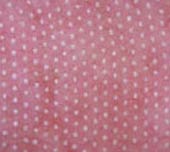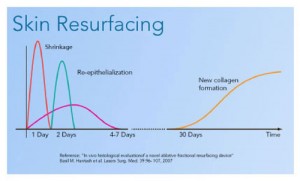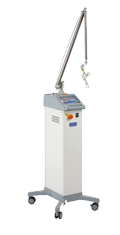 Laser Resurfacing
Laser Resurfacing
Laser resurfacing is the name given to a procedure that dramatically improves skin texture (wrinkles, scars rough spots, coarse pores).
You would be forgiven for thinking that laser resurfacing was the equivalent of using sandpaper to plane down the uneven surface of the skin. That was the principle behind full ablative CO2 resurfacing, the entire top layer of the skin was removed (usually under a general anaesthetic) and allowed to regrow, resulting in flattening of the surface wrinkles.
Although results were spectacular, there were significant drawbacks as the raw surface required surgical dressings for about 2 weeks. There was a significant risk of infection during this open phase and the new skin was often paler than the surrounding skin.
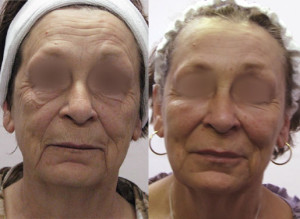
* Individual Results May Vary
The Smartxide DOT Fractional CO2 Resurfacing Laser
The Smartxide DOT fractional CO2 resurfacing laser is used for treating:
- Deep Lines & Wrinkles (face, neck, chest)
- Smoker’s Lines (vertical lines above and below the lips).
- Loose, Sagging Skin (bags under the eyes, loose skin of the neck).
- Droopy Eyelids (the non-surgical Madonna Eyelift).
- Stretch Marks resulting from post pregnancy, weight loss*.
- Severe Acne Scarring**.
- Traumatic and surgical Scars.
- Poor Skin Texture (fine lines, pores, pigmentation*).
* Pigment – e.g. brown spots – may require additional IPL treatments
** Caution is advised with keloid scars – they may not respond, improve, or even get worse, as the problem is with the healing characteristics of the skin.
The Madonna EyeLift
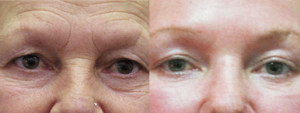
LazerRoom Patient – The Madonna EyeLift * Individual Results May Vary
This non-surgical approach to droopy eyelids was developed by renowned Manhattan dermatologist, Dr. Bruce Katz.
The Smartxide laser is used to lightly resurface the upper eyelids, under the eyes, under and above the brows as well as the crow’s feet area. As discussed previously, one of the chief characteristics of the CO2 laser is to cause tissue shrinkage, hence a series of light treatments of the above-noted areas will progressively shrink loose baggy tissue while smoothing out wrinkles (crow’s feet) and improve the appearance of dark circles under the eyes.
What To Expect
- 3-5 treatments are required at 2-4 week intervals
- Downtime consists of 1-2 days of swelling around the eye area
- followed by another 2-3 days of redness and mild flakiness (which can be covered with make-up).
Patients who have their treatment done on Friday, are usually back to work by Monday.
Steel contact lenses (corneal shields) are inserted below the upper lid prior to treatment to ensure proper protection of the eye. The entire treatment takes approximately 10 minutes and is done under topical anaesthesia.
Prior consultation is required, as some patients may not be suited to this procedure (eg. if they have excess skin or extreme ptosis of the upper lid, very low brows, or fat deposits under the eyes known as infraorbital fat pads), and would be better suited to surgical procedures.
